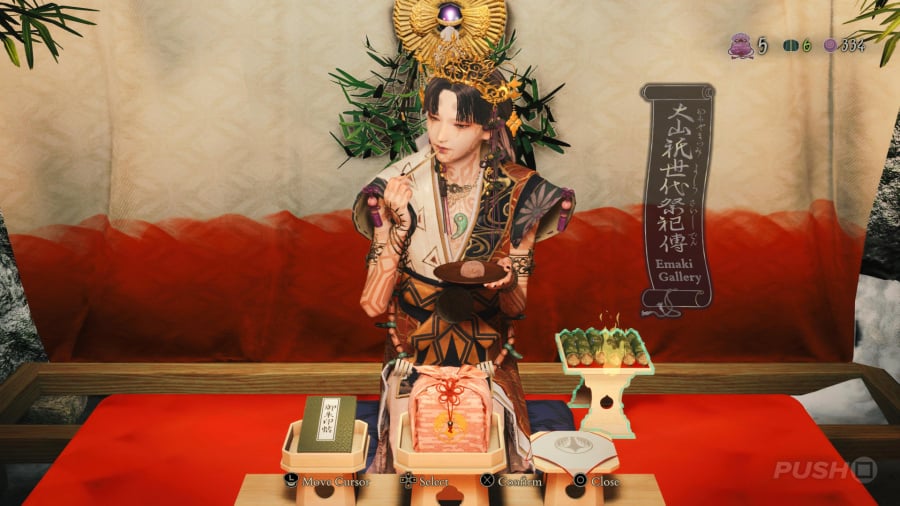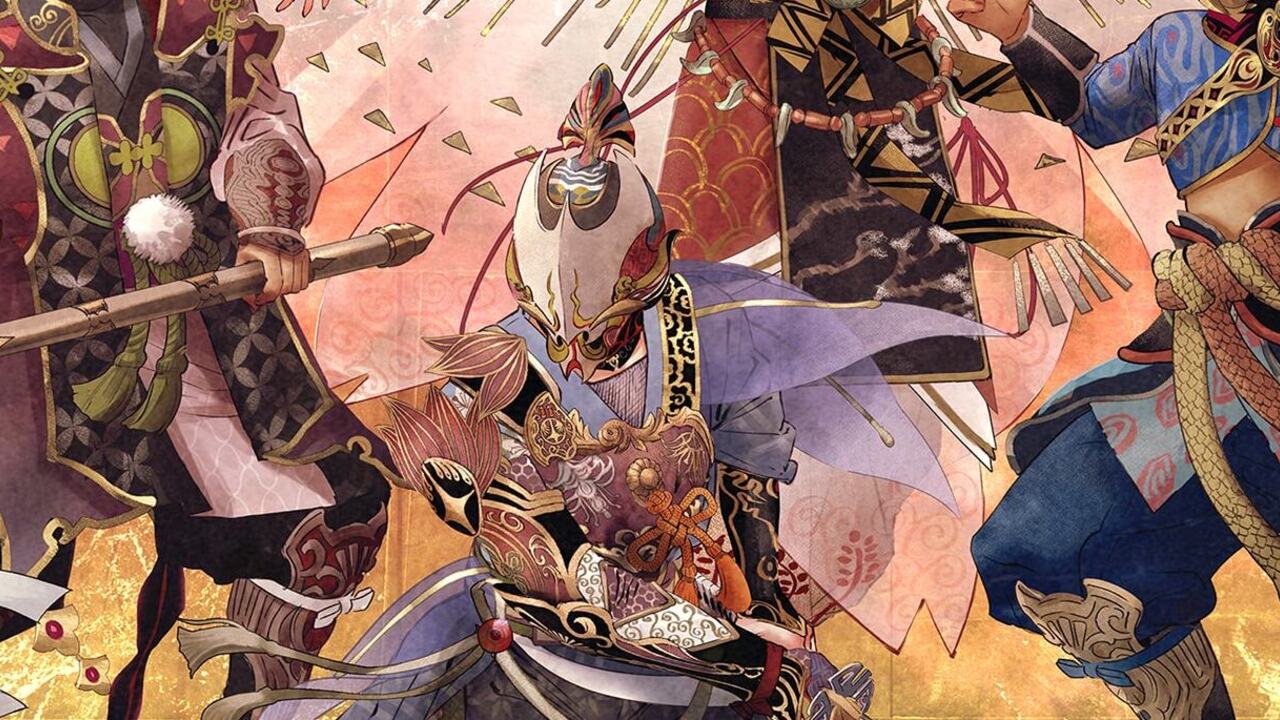Capcom is on a roll right now, everything it touches seems to turn to gold, from big releases to smaller experiments. Kunitsu-Gami: Path of the Goddess definitely fits into the latter category, and it’s a great time for fans of real-time strategy with a twist.
Being able to control a hero character in the thick of a battle that you dictate may not be exactly new, but it does feel refreshing since the combat is very focused on tower defense. Over the course of 10-12 hours of playtime, Kunitsu-Gami: Path of the Goddess is a joy, if a few rough edges. In fact, you may wish it were just a little bit longer.
The game’s story is told almost entirely without dialogue. It begins with the player character, Soh, attempting to fend off an invasion of demons called Seethe from the top of his mountain home, protecting the local shrine maiden Yoshiro as she performs rituals to banish them. However, they are defeated and the mountain is overrun; the game is essentially a procession down the slopes, retreating but cleansing the land as it goes.

This manifests itself in a mission-based structure – as you make your way through a campaign map, you’ll stop at shrines, abandoned villages, and tunnels to stop and take on the challenge of each. Once you’ve completed a location, you’re tasked with allocating resources to repair it over time, a simple and ultimately somewhat tedious bit of base-building that yields upgrade resources and unlockable items. Diving into those missions, however, is the real meat of the game.
Kunitsu-Gami puts you in Soh’s shoes in a series of arenas as he guides Yoshiro down a set path to a gate that she must purify. Sometimes you’ll choose between two branching paths, but either way you’ll still be tasked with the same task. You have a day period where you can run around the stage, find chunks of demonic energy to purify yourself, earn points that you can then spend on the villagers you find and free around the scene, and convert them into warrior units.
At first these are limited to simple archers and axemen, but you soon unlock more expensive options that can do things like freeze enemies in place for a short time, fire explosive cannonballs from a distance, or even heal your fellow units. You place these around Yoshiro’s last stand as day turns to night, at which point the battle begins and you must survive until morning.

This means the arrival of enemies from fixed locations: festering gates from which demons pour forth, and watch them stroll toward the maiden, slowed by your units, any obstacles you’ve managed to construct, and your own skills. Soh is a swordsman, after all, and you can clear fields of enemies more devastatingly than the units you order around. This means that each night your attention is divided between where you should be, fighting fire and taking down demons, and where your units should be, providing cover or blocking a path entirely.
It’s a very nice balance, with a classic rock-paper-scissors element to your choice of units based on the enemies that arrive, and further twists added fairly regularly (each used at least a few times) to keep things more challenging. There are levels where you can’t take part in any combat yourself, merely issuing orders; others see you on a floating armada of boats, struggling to keep one of your craft from sinking; another type requires you to keep lanterns burning around the level in order to target enemies.
Your ability to actually issue commands comes via a time-pause menu that lets you cycle through your units and place them on the map, though you’re limited by your field of view and location; there’s no easy way to see the entire map while paused. You also have to stand right next to a unit in order to heal it or change its role (which you’ll need to do often in the later stages), so prepare for Soh’s relatively slow movement speed to become a little annoying.

Soh’s actual combat controls are serviceable, but noticeably nowhere near as fluid as a good Dynasty Warriors character, let alone a Dante or Bayonetta. This might help balance out your strengths on the battlefield, but it makes investing in Soh’s skill tree less appealing compared to upgrading your units’ abilities. That upgrade tree is fully refundable at any time, however, which is great for experimenting with different units and tactics.
Most levels last over a single night, and often a handful of days, as you battle through maps, stopping at just the right times to gain a nighttime buff and buy yourself more time to build improvements like cannons or sniper towers. Managing your units through these repeated battles is challenging fun, bolstered by generous nighttime checkpoints that mean you’ll rarely, if ever, have to start an entire mission over again if you fail.
Still, it’s fair to say that by the time the credits rolled, we were still craving a truly gruelling stage – the chance to truly pull off a backs-at-the-wall victory against the odds. Those put off by a high challenge can be reassured that Kunitsu-Gami is more accessible than you might think. What sometimes requires a bit more skill are the boss battles you unlock between most stages. These act as mandatory barriers to your progression, with some introducing new, more powerful foes, while others are a little more unique (and, frankly, sometimes exhausting to actually fight).

From a top-down perspective but with plenty of camera control, the game looks quite nice at times, if a little lacking in environmental detail. Those demon models are delightfully weird to make up for it, and we had no performance issues while playing. The soundtrack by Kunitsu-Gami also deserves a mention, a nice mix of smooth, calm melodies with funky prog-rock at its most heated moments. Also on the subject of audio, you’ll want to turn down your DualSense controller’s speaker in the PS5’s system settings, as the game unfortunately uses it quite annoyingly constantly with no switch to turn it off.
Conclusion
It might not feel as new as it looks, but Kunitsu-Gami is still a fun little game, with a seriously engaging hook that will make you wish it was longer than it actually is. The plates it keeps spinning are impressive, even if in the end it’s a little too light.
